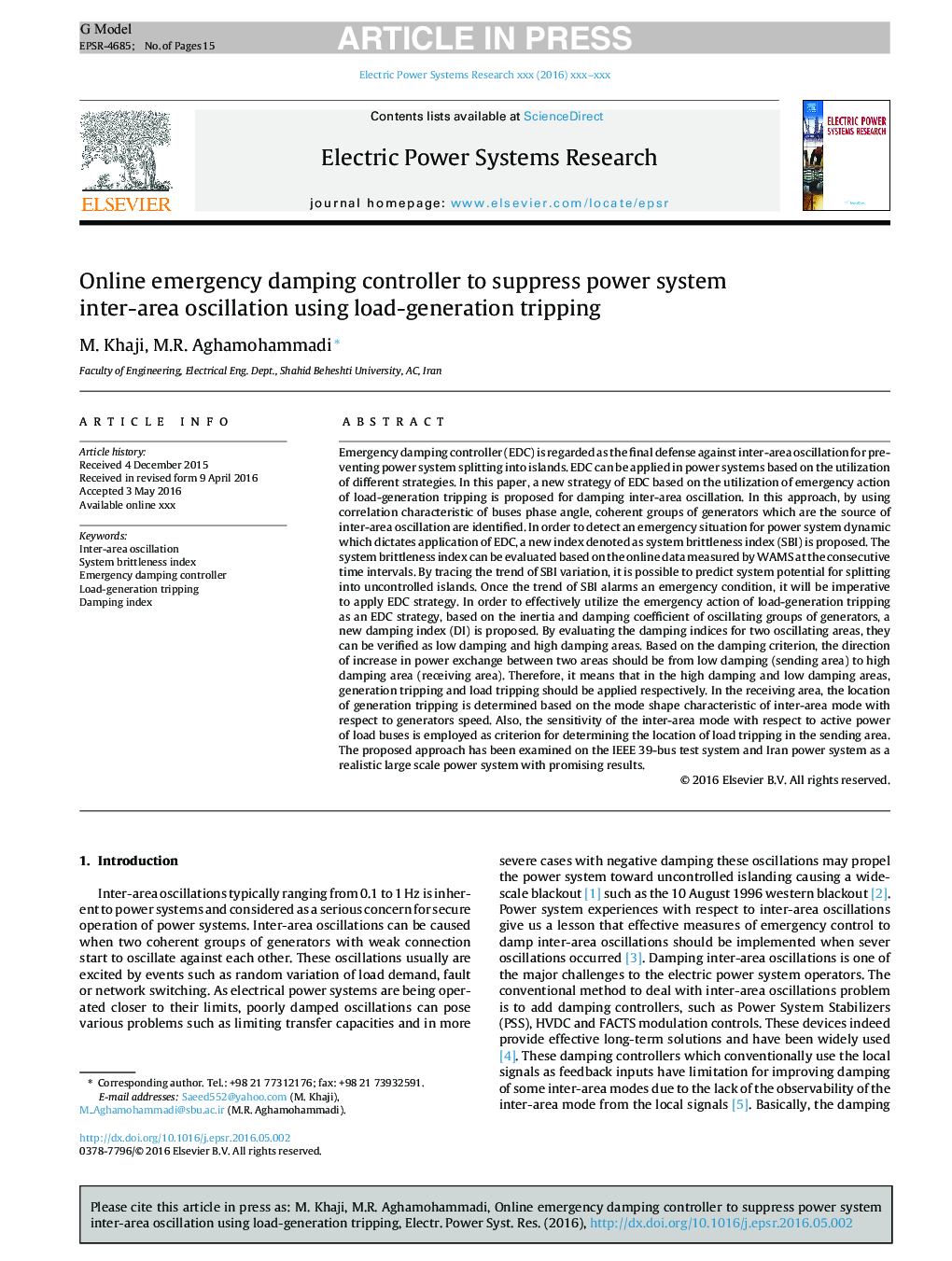| کد مقاله | کد نشریه | سال انتشار | مقاله انگلیسی | نسخه تمام متن |
|---|---|---|---|---|
| 5001401 | 1460873 | 2016 | 15 صفحه PDF | دانلود رایگان |
عنوان انگلیسی مقاله ISI
Online emergency damping controller to suppress power system inter-area oscillation using load-generation tripping
ترجمه فارسی عنوان
کنترل کننده اضطراری آنلاین برای سرکوب نوسانات بین محدوده قدرت سیستم با استفاده از بریدن نسل بار
دانلود مقاله + سفارش ترجمه
دانلود مقاله ISI انگلیسی
رایگان برای ایرانیان
کلمات کلیدی
نوسانات بین منطقه، شاخص شکنندگی سیستم، کنترل کننده امداد اضطراری، از دست دادن نسل بار، شاخص شیب دار،
موضوعات مرتبط
مهندسی و علوم پایه
مهندسی انرژی
مهندسی انرژی و فناوری های برق
چکیده انگلیسی
Emergency damping controller (EDC) is regarded as the final defense against inter-area oscillation for preventing power system splitting into islands. EDC can be applied in power systems based on the utilization of different strategies. In this paper, a new strategy of EDC based on the utilization of emergency action of load-generation tripping is proposed for damping inter-area oscillation. In this approach, by using correlation characteristic of buses phase angle, coherent groups of generators which are the source of inter-area oscillation are identified. In order to detect an emergency situation for power system dynamic which dictates application of EDC, a new index denoted as system brittleness index (SBI) is proposed. The system brittleness index can be evaluated based on the online data measured by WAMS at the consecutive time intervals. By tracing the trend of SBI variation, it is possible to predict system potential for splitting into uncontrolled islands. Once the trend of SBI alarms an emergency condition, it will be imperative to apply EDC strategy. In order to effectively utilize the emergency action of load-generation tripping as an EDC strategy, based on the inertia and damping coefficient of oscillating groups of generators, a new damping index (DI) is proposed. By evaluating the damping indices for two oscillating areas, they can be verified as low damping and high damping areas. Based on the damping criterion, the direction of increase in power exchange between two areas should be from low damping (sending area) to high damping area (receiving area). Therefore, it means that in the high damping and low damping areas, generation tripping and load tripping should be applied respectively. In the receiving area, the location of generation tripping is determined based on the mode shape characteristic of inter-area mode with respect to generators speed. Also, the sensitivity of the inter-area mode with respect to active power of load buses is employed as criterion for determining the location of load tripping in the sending area. The proposed approach has been examined on the IEEE 39-bus test system and Iran power system as a realistic large scale power system with promising results.
ناشر
Database: Elsevier - ScienceDirect (ساینس دایرکت)
Journal: Electric Power Systems Research - Volume 140, November 2016, Pages 806-820
Journal: Electric Power Systems Research - Volume 140, November 2016, Pages 806-820
نویسندگان
M. Khaji, M.R. Aghamohammadi,
